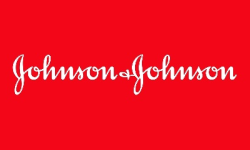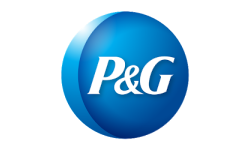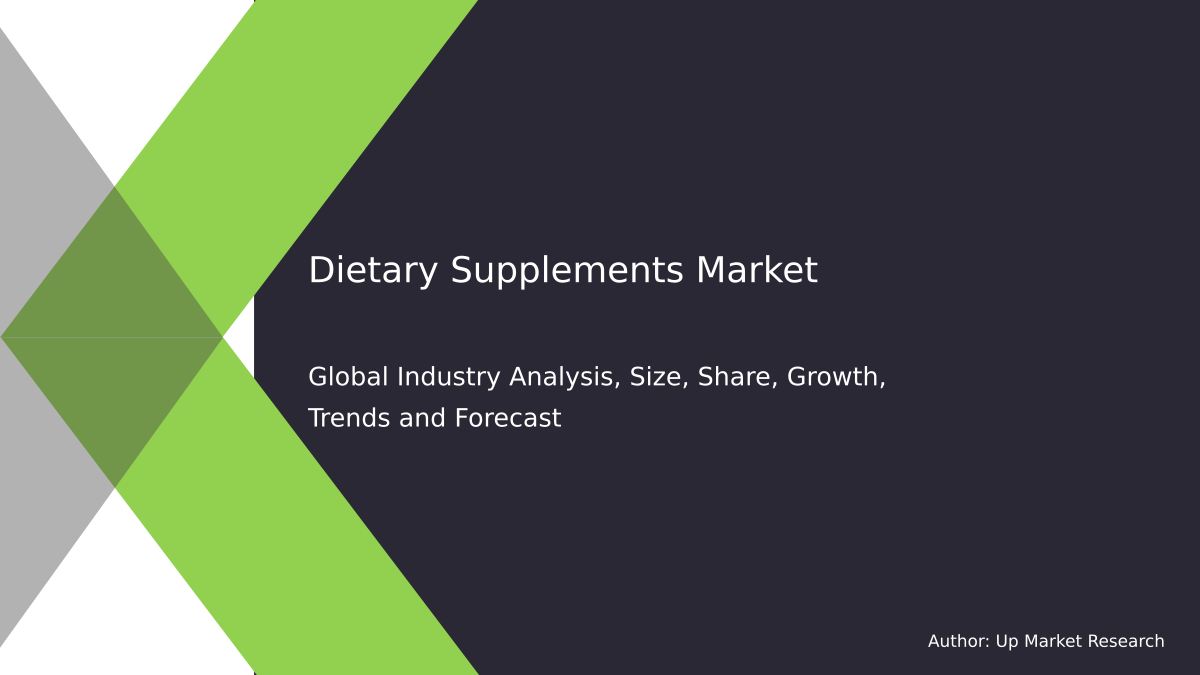
Global Whey Protein Market by Type (Whey Protein Concentrates, Whey Protein Hydrolysates, Whey Protein Isolates) and Region (North America, Latin America, Europe, Asia Pacific and Middle East & Africa), Forecast To 2028
Summary of the Report
Global whey protein market was valued at USD 8.7 million in 2019. It is projected to grow at a compound annual rate of 9.8% between 2020 and 2027. The rising incidence of chronic diseases, especially among millennials, is one of key drivers for the growth of protein-rich diets. This will likely increase demand for whey proteins.
Manufacturers of sports nutrition products love this product because it is easy to digest, has a strong amino profile and is widely available. Manufacturers of sports nutritional supplements will have lucrative opportunities in the future due to increasing demand.
According to the Institute of Food Technologists' 2019 article, nearly 55.0% of Americans agreed that high levels of protein played a significant role in their food buying decisions. Nearly half of Americans are trying to lose weight due to chronic diseases such as obesity.
Food and beverage companies are now incorporating functional whey protein into their packaged foods due to the changing consumer behavior in America. It can replace expensive and high-fat ingredients like butter, milk, cream cheese, and cream cheese, while still maintaining the original flavor, texture, appearance, and taste. Companies are also incorporating functional ingredients to enhance product labels due to increased competition in the packaged food sector.
Because of its hair-conditioning and skin-hydrating properties, the product is widely used in personal care products. The global beauty and personal-care industry is optimistic due to the growing number of women in work and the increasing penetration of online e-commerce. This will likely encourage the product's penetration into the personal care applications segment.
It is however derived from milk so people who are allergic to it will also be allergic to it. Alpha-lactalbumin, beta-lactoglobulin and other allergens are the main ingredients in whey. People with milk allergy prefer to eat other types of protein, which limits the product's penetration.
Type Insights
Whey Protein Concentrate (WPC), which accounted for 48.0% of global revenue in 2019, led the market. WPCs are a class of whey proteins which remain soluble in the whey even after precipitation of casein at pH 6.6 and 20degC. These concentrates contain minerals, lactose, lipids and a heterogeneous mixture of dissimilar proteins.
WPCs can be used in many applications, including the manufacture of yogurt products, dairy desserts, and beverages. These concentrates can also be used as a source for protein fortification in infant food and other nutritional products. WPC has a gelling property when it is dissolved in water and heated. This property is very beneficial to the meat and nutritional industry.
Whey Protein Hydrolysate, (WPH), has prebiotic, antimicrobial and antioxidant properties. They are used in infant nutrition, clinical nutrition, sports nutrition, and other products. Hydrolyzed Whey Proteins are generally more expensive than their counterparts. Therefore, most whey supplement makers add very little of this protein to their formulas.
WPH can also be used in the manufacture of low-fat foods, bakery products, protein-fortified beverages and dietetic food. The segment is expected to grow due to favorable support from regulatory bodies such as the U.S. Food and Drug Administration.
Application Insights
Food and beverage applications accounted for over 48.0% of global revenue in 2019, and led the whey protein industry. Because of its ability to thicken, emulsify and brown products, it is preferred by bakery and confectionery manufacturers. These ingredients increase the solubility of bakery and confectionery products, as well as their nutritional fortification, gelation and water-binding capabilities.
There have been many developments in the beverage market. Arla Foods amba, a Danish manufacturer of milk products, launched a new beverage based upon the whey protein concept. The new product is targeted at patients who need nutrition in a low volume. These developments are expected to drive the product's growth in the beverages sector over the forecast period.
It is used in the cosmetic and personal care industries to make hair conditioners, waves, hair dyes and colours, shampoos, eyecare products, and skin and body moisturizing products. Because of its many properties, including skin-hydrating and skin-conditioning as well as hair conditioning, whey protein will likely see significant demand.
The shift in consumer preference for premium herbal and natural ingredients-based personal care products will likely increase the demand for these products in the cosmetics and personal care industries. The industry's growth is also expected to be aided by the rising demand for creams and moisturizers due to increased consumer awareness and high disposable incomes in countries like the U.S., Canada and France.
Regional Insights
North America was the dominant market, accounting for more than 39.0% of global revenue in 2019. North America dominated the market and accounted for over 39.0% of global revenue in 2019. The "transitioning face" of food has become functional meals and other supplements that can offer many health benefits.
North America is expected to see steady growth due to the increased use of food supplements that have high nutritional content and calorie reductions. The forecast period will see a rise in awareness of the benefits of whey protein ingredients due to new product launches in Mexico and Canada.
Asia Pacific's market was valued at USD1.6 billion in 2019. It is expected to experience the fastest growth due to growing domestic demand and exports of dairy-based proteins such as casein and whey. China is the world's largest producer of dairy-based protein ingredients due to its easy access to raw materials.
The market for the product is expected to grow due to increased health awareness and the increasing number of gyms in India. India's remarkable food and beverage industry growth and rising purchasing power parity are expected to increase the demand for functional and healthy foods high in protein. Over the forecast period, the market is expected to benefit from an increased demand for nutrition food and beverages by Indian customers.
Market Share Insights & Key Companies
As they launch new products, key companies are focusing their R&D efforts. To ensure uninterrupted raw material supply and efficient logistic networks, the manufacturers have formed partnerships with milk suppliers. Acquisition is a key strategy for expanding the geographical footprint and product portfolio.
Saputo Inc. purchased Dairy Crest Group P.L.C. in April 2019. This U.K-based dairy products manufacturer was a subsidiary of Saputo Inc. To expand its international presence, the former took on the acquisition. To strengthen their market position, key players are now focusing more on consolidation. In the next few years, there will be many mergers and acquisitions within the whey industry. The following are some of the major players in the whey proteins market:
-
Hilmar Cheese Company, Inc.
-
Saputo Inc.
-
Glanbia plc
-
Fonterra Co-operative Group Ltd
-
Arla Foods
-
Alpavit
-
Wheyco GmbH
-
Milk Specialties
-
Carbery Group
-
LACTALIS Ingredients
-
Olam International
-
Davisco Foods International, Inc.
-
Milkaut SA
-
Leprino Foods Company
-
Maple Island Inc.
Up Market Research published a new report titled “Whey Protein Market research report which is segmented by Type (Whey Protein Concentrates, Whey Protein Hydrolysates, Whey Protein Isolates), By Players/Companies Milk Specialties, Hilmar Cheese Company Inc, Milkaut SA, Alpavit, LACTALIS Ingredients, Maple Island Inc, Wheyco GmbH, Fonterra Co-operative Group Ltd, Carbery Group, Saputo Inc, Arla Foods, Glanbia plc, Olam International, Davisco Foods International Inc, Leprino Foods Company”. As per the study the market is expected to grow at a CAGR of XX% in the forecast period.
Report Scope
| Report Attributes | Report Details |
| Report Title | Whey Protein Market Research Report |
| By Type | Whey Protein Concentrates, Whey Protein Hydrolysates, Whey Protein Isolates |
| By Companies | Milk Specialties, Hilmar Cheese Company Inc, Milkaut SA, Alpavit, LACTALIS Ingredients, Maple Island Inc, Wheyco GmbH, Fonterra Co-operative Group Ltd, Carbery Group, Saputo Inc, Arla Foods, Glanbia plc, Olam International, Davisco Foods International Inc, Leprino Foods Company |
| Regions Covered | North America, Europe, APAC, Latin America, MEA |
| Base Year | 2020 |
| Historical Year | 2018 to 2019 (Data from 2010 can be provided as per availability) |
| Forecast Year | 2028 |
| Number of Pages | 248 |
| Number of Tables & Figures | 174 |
| Customization Available | Yes, the report can be customized as per your need. |
The report covers comprehensive data on emerging trends, market drivers, growth opportunities, and restraints that can change the market dynamics of the industry. It provides an in-depth analysis of the market segments which include products, applications, and competitor analysis.

Global Whey Protein Market Report Segments:
The market is segmented by Type (Whey Protein Concentrates, Whey Protein Hydrolysates, Whey Protein Isolates).
Whey Protein Market research report delivers a close watch on leading competitors with strategic analysis, micro and macro market trend and scenarios, pricing analysis and a holistic overview of the market situations in the forecast period. It is a professional and a detailed report focusing on primary and secondary drivers, market share, leading segments and geographical analysis. Further, key players, major collaborations, merger & acquisitions along with trending innovation and business policies are reviewed in the report.
Key Benefits for Industry Participants & Stakeholders:
- Industry drivers, restraints, and opportunities covered in the study
- Neutral perspective on the market performance
- Recent industry trends and developments
- Competitive landscape & strategies of key players
- Potential & niche segments and regions exhibiting promising growth covered
- Historical, current, and projected market size, in terms of value
- In-depth analysis of the Whey Protein Market
Overview of the regional outlook of the Whey Protein Market:
Based on region, the market is segmented into North America, Europe, Asia Pacific, Latin America and Middle East & Africa (MEA). North America region is further bifurcated into countries such as U.S., and Canada. The Europe region is further categorized into U.K., France, Germany, Italy, Spain, Russia, and Rest of Europe. Asia Pacific is further segmented into China, Japan, South Korea, India, Australia, South East Asia, and Rest of Asia Pacific. Latin America region is further segmented into Brazil, Mexico, and Rest of Latin America, and the MEA region is further divided into GCC, Turkey, South Africa, and Rest of MEA.

Highlights of The Whey Protein Market Report:
- The market structure and projections for the coming years.
- Drivers, restraints, opportunities, and current trends of Whey Protein Market.
- Historical data and forecast.
- Estimations for the forecast period 2028.
- Developments and trends in the market.
1. Whey Protein Concentrates
2. Whey Protein Hydrolysates
3. Whey Protein Isolates
- Market scenario by region, sub-region, and country.
- Market share of the market players, company profiles, product specifications, SWOT analysis, and competitive landscape.
- Analysis regarding upstream raw materials, downstream demand, and current market dynamics.
- Government Policies, Macro & Micro economic factors are also included in the report.
We have studied the Whey Protein Market in 360 degrees via. both primary & secondary research methodologies. This helped us in building an understanding of the current market dynamics, supply-demand gap, pricing trends, product preferences, consumer patterns & so on. The findings were further validated through primary research with industry experts & opinion leaders across countries. The data is further compiled & validated through various market estimation & data validation methodologies. Further, we also have our in-house data forecasting model to predict market growth up to 2028.
How you may use our products:
- Correctly Positioning New Products
- Market Entry Strategies
- Business Expansion Strategies
- Consumer Insights
- Understanding Competition Scenario
- Product & Brand Management
- Channel & Customer Management
- Identifying Appropriate Advertising Appeals

Reasons to Purchase the Whey Protein Market Report:
- The report includes a plethora of information such as market dynamics scenario and opportunities during the forecast period
- Segments and sub-segments include quantitative, qualitative, value (USD Million,) and volume (Units Million) data.
- Regional, sub-regional, and country level data includes the demand and supply forces along with their influence on the market.
- The competitive landscape comprises share of key players, new developments, and strategies in the last three years.
- Comprehensive companies offering products, relevant financial information, recent developments, SWOT analysis, and strategies by these players.
Chapter 2 Assumptions and Acronyms Used
Chapter 3 Research Methodology
Chapter 4 Whey Protein Market Overview
4.1 Introduction
4.1.1 Market Taxonomy
4.1.2 Market Definition
4.1.3 Macro-Economic Factors Impacting the Market Growth
4.2 Whey Protein Market Dynamics
4.2.1 Market Drivers
4.2.2 Market Restraints
4.2.3 Market Opportunity
4.3 Whey Protein Market - Supply Chain Analysis
4.3.1 List of Key Suppliers
4.3.2 List of Key Distributors
4.3.3 List of Key Consumers
4.4 Key Forces Shaping the Whey Protein Market
4.4.1 Bargaining Power of Suppliers
4.4.2 Bargaining Power of Buyers
4.4.3 Threat of Substitution
4.4.4 Threat of New Entrants
4.4.5 Competitive Rivalry
4.5 Global Whey Protein Market Size & Forecast, 2018-2028
4.5.1 Whey Protein Market Size and Y-o-Y Growth
4.5.2 Whey Protein Market Absolute $ Opportunity
Chapter 5 Global Whey Protein Market Analysis and Forecast by Type
5.1 Introduction
5.1.1 Key Market Trends & Growth Opportunities by Type
5.1.2 Basis Point Share (BPS) Analysis by Type
5.1.3 Absolute $ Opportunity Assessment by Type
5.2 Whey Protein Market Size Forecast by Type
5.2.1 Whey Protein Concentrates
5.2.2 Whey Protein Hydrolysates
5.2.3 Whey Protein Isolates
5.3 Market Attractiveness Analysis by Type
Chapter 6 Global Whey Protein Market Analysis and Forecast by Region
6.1 Introduction
6.1.1 Key Market Trends & Growth Opportunities by Region
6.1.2 Basis Point Share (BPS) Analysis by Region
6.1.3 Absolute $ Opportunity Assessment by Region
6.2 Whey Protein Market Size Forecast by Region
6.2.1 North America
6.2.2 Europe
6.2.3 Asia Pacific
6.2.4 Latin America
6.2.5 Middle East & Africa (MEA)
6.3 Market Attractiveness Analysis by Region
Chapter 7 Coronavirus Disease (COVID-19) Impact
7.1 Introduction
7.2 Current & Future Impact Analysis
7.3 Economic Impact Analysis
7.4 Government Policies
7.5 Investment Scenario
Chapter 8 North America Whey Protein Analysis and Forecast
8.1 Introduction
8.2 North America Whey Protein Market Size Forecast by Country
8.2.1 U.S.
8.2.2 Canada
8.3 Basis Point Share (BPS) Analysis by Country
8.4 Absolute $ Opportunity Assessment by Country
8.5 Market Attractiveness Analysis by Country
8.6 North America Whey Protein Market Size Forecast by Type
8.6.1 Whey Protein Concentrates
8.6.2 Whey Protein Hydrolysates
8.6.3 Whey Protein Isolates
8.7 Basis Point Share (BPS) Analysis by Type
8.8 Absolute $ Opportunity Assessment by Type
8.9 Market Attractiveness Analysis by Type
Chapter 9 Europe Whey Protein Analysis and Forecast
9.1 Introduction
9.2 Europe Whey Protein Market Size Forecast by Country
9.2.1 Germany
9.2.2 France
9.2.3 Italy
9.2.4 U.K.
9.2.5 Spain
9.2.6 Russia
9.2.7 Rest of Europe
9.3 Basis Point Share (BPS) Analysis by Country
9.4 Absolute $ Opportunity Assessment by Country
9.5 Market Attractiveness Analysis by Country
9.6 Europe Whey Protein Market Size Forecast by Type
9.6.1 Whey Protein Concentrates
9.6.2 Whey Protein Hydrolysates
9.6.3 Whey Protein Isolates
9.7 Basis Point Share (BPS) Analysis by Type
9.8 Absolute $ Opportunity Assessment by Type
9.9 Market Attractiveness Analysis by Type
Chapter 10 Asia Pacific Whey Protein Analysis and Forecast
10.1 Introduction
10.2 Asia Pacific Whey Protein Market Size Forecast by Country
10.2.1 China
10.2.2 Japan
10.2.3 South Korea
10.2.4 India
10.2.5 Australia
10.2.6 South East Asia (SEA)
10.2.7 Rest of Asia Pacific (APAC)
10.3 Basis Point Share (BPS) Analysis by Country
10.4 Absolute $ Opportunity Assessment by Country
10.5 Market Attractiveness Analysis by Country
10.6 Asia Pacific Whey Protein Market Size Forecast by Type
10.6.1 Whey Protein Concentrates
10.6.2 Whey Protein Hydrolysates
10.6.3 Whey Protein Isolates
10.7 Basis Point Share (BPS) Analysis by Type
10.8 Absolute $ Opportunity Assessment by Type
10.9 Market Attractiveness Analysis by Type
Chapter 11 Latin America Whey Protein Analysis and Forecast
11.1 Introduction
11.2 Latin America Whey Protein Market Size Forecast by Country
11.2.1 Brazil
11.2.2 Mexico
11.2.3 Rest of Latin America (LATAM)
11.3 Basis Point Share (BPS) Analysis by Country
11.4 Absolute $ Opportunity Assessment by Country
11.5 Market Attractiveness Analysis by Country
11.6 Latin America Whey Protein Market Size Forecast by Type
11.6.1 Whey Protein Concentrates
11.6.2 Whey Protein Hydrolysates
11.6.3 Whey Protein Isolates
11.7 Basis Point Share (BPS) Analysis by Type
11.8 Absolute $ Opportunity Assessment by Type
11.9 Market Attractiveness Analysis by Type
Chapter 12 Middle East & Africa (MEA) Whey Protein Analysis and Forecast
12.1 Introduction
12.2 Middle East & Africa (MEA) Whey Protein Market Size Forecast by Country
12.2.1 Saudi Arabia
12.2.2 South Africa
12.2.3 UAE
12.2.4 Rest of Middle East & Africa (MEA)
12.3 Basis Point Share (BPS) Analysis by Country
12.4 Absolute $ Opportunity Assessment by Country
12.5 Market Attractiveness Analysis by Country
12.6 Middle East & Africa (MEA) Whey Protein Market Size Forecast by Type
12.6.1 Whey Protein Concentrates
12.6.2 Whey Protein Hydrolysates
12.6.3 Whey Protein Isolates
12.7 Basis Point Share (BPS) Analysis by Type
12.8 Absolute $ Opportunity Assessment by Type
12.9 Market Attractiveness Analysis by Type
Chapter 13 Competition Landscape
13.1 Whey Protein Market: Competitive Dashboard
13.2 Global Whey Protein Market: Market Share Analysis, 2019
13.3 Company Profiles (Details – Overview, Financials, Developments, Strategy)
13.3.1 Milk Specialties
13.3.2 Hilmar Cheese Company Inc
13.3.3 Milkaut SA
13.3.4 Alpavit
13.3.5 LACTALIS Ingredients
13.3.6 Maple Island Inc
13.3.7 Wheyco GmbH
13.3.8 Fonterra Co-operative Group Ltd
13.3.9 Carbery Group
13.3.10 Saputo Inc
13.3.11 Arla Foods
13.3.12 Glanbia plc
13.3.13 Olam International
13.3.14 Davisco Foods International Inc
13.3.15 Leprino Foods Company
The global Whey Protein market has been segmented based on
By Type
- Whey Protein Concentrates
- Whey Protein Hydrolysates
- Whey Protein Isolates
- Asia Pacific
- North America
- Latin America
- Europe
- Middle East & Africa
- Milk Specialties
- Hilmar Cheese Company Inc
- Milkaut SA
- Alpavit
- LACTALIS Ingredients
- Maple Island Inc
- Wheyco GmbH
- Fonterra Co-operative Group Ltd
- Carbery Group
- Saputo Inc
- Arla Foods
- Glanbia plc
- Olam International
- Davisco Foods International Inc
- Leprino Foods Company
Related Reports
Some other reports from this category!



















